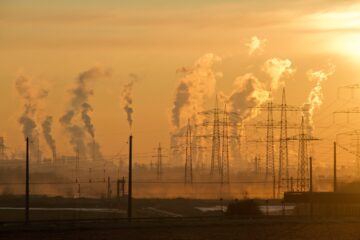Introduction
Himachal Pradesh, Situated in the Northern part of India, is a state renowned for its majestic landscapes, vibrant culture, and rich heritage. Nestled in the Himalayas, Himachal Pradesh is often referred to as the “Land of Gods” due to its spiritual and serene environment. The state is inhabited by a variety of ethnic groups, each with its unique traditions, festivals, and languages. The culture of Himachal Pradesh is deeply rooted in its religious practices, including Hinduism and Buddhism. Festivals like Diwali, Dussehra, and Lohri are celebrated with great enthusiasm, showcasing the lively and vibrant spirit of the people.
- Himachal Pradesh has two capitals – Shimla and Dharamshala. Shimla is the summer capital of Himachal Pradesh and Dharamshala is the winter capital of Himachal Pradesh.
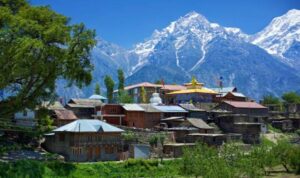
1. Shimla
- Shimla is the Summer Capital of Himachal Pradesh
Shimla, nestled in the heart of the Himalayas, stands as a testament to nature’s splendor and human ingenuity. As the capital of Himachal Pradesh, it holds a prominent position not only geographically but also historically and culturally. This essay delves into the rich history, breathtaking landscapes, unique culture, and the development of Shimla, encapsulating the essence of this enchanting city.
● Historical Background:
Shimla’s history dates back to the early 19th century when the British East India Company discovered its potential as a summer retreat. Prior to British influence, Shimla was a part of the Nepalese kingdom and was called Shyamala. The British were captivated by its cool climate and breathtaking landscapes, leading them to develop it as a summer capital during the colonial period.
In 1864, Shimla was declared the summer capital of British India, and significant infrastructural development commenced. The town’s layout was designed meticulously, and stunning Victorian-style buildings were erected. Shimla became a hub for the British elite to escape the scorching heat of the Indian plains.
● Geography and Climate:
Nestled in the Himalayan range, Shimla’s geography is characterized by lush green hills, majestic mountains, and dense forests. The city’s elevation of approximately 2,276 meters (7,467 feet) above sea level contributes to its cool and pleasant climate, making it a sought-after destination year-round.
The summer season, lasting from April to June, offers a reprieve from the heat of the plains, with temperatures ranging from 15°C to 30°C (59°F to 86°F). The monsoon season, from July to September, brings moderate to heavy rainfall. Winters, from November to February, are cold and snowy, with temperatures dipping below freezing.
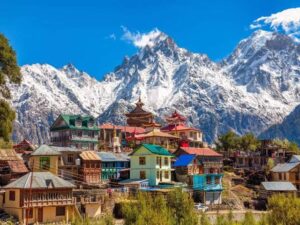
● Culture and Heritage:
Shimla’s culture is a harmonious blend of various ethnicities, predominantly comprising Hinduism and Buddhism. The influences of both faiths are evident in the city’s temples, monasteries, and festivals. The locals celebrate traditional festivals such as Diwali, Dussehra, and Navaratri with great zeal and enthusiasm. The Gaiety Theater, an architectural gem, showcases cultural events, theater performances, and art exhibitions, enriching the city’s cultural tapestry.
The Mall Road, a popular promenade, is a bustling hub of activity, offering an array of shops, restaurants, and entertainment options. It reflects the vibrant social life of the people of Shimla.
● Tourist Attractions:
Shimla is a paradise for tourists, offering a multitude of attractions that captivate visitors. The Ridge, a prominent landmark, provides panoramic views of the surrounding mountains and the Christ Church, an iconic structure. Jakhoo Temple, dedicated to Lord Hanuman, stands atop Jakhoo Hill and offers breathtaking views of the city. The Summer Hill and Annandale are perfect spots for picnics and leisurely walks amidst nature.
For history enthusiasts, the Shimla State Museum offers a glimpse into the region’s past, housing an impressive collection of artifacts and artworks. Kufri, a picturesque hill station near Shimla, is a haven for adventure seekers, known for skiing and trekking.
● Development and Modernization:
Over the years, Shimla has seen significant development and modernization, catering to the needs of both residents and tourists. Improved infrastructure, better connectivity, and a focus on sustainable tourism have propelled Shimla into a bustling city while preserving its natural beauty. Efforts are being made to maintain a balance between development and environmental conservation.
The introduction of eco-friendly practices, waste management systems, and renewable energy initiatives showcase the commitment to preserving the city’s pristine environment. Additionally, advancements in healthcare, education, and transportation have enhanced the overall quality of life in Shimla.
2. Dharamshala
- Dharamshala is the Winter Capital of Himachal Pradesh
Nestled in the lap of the majestic Himalayas, Dharamshala is a city of profound cultural, spiritual and natural importanceLocated in the state of Himachal Pradesh, this serene abode is often referred to as the capital of the state, Dharamshala is full of characteristics, cultural heritage, natural beauty and spiritual essence that make Dharamshala a jewel in the crown of Himachal Pradesh.
- Its Importance as the capital of Himachal Pradesh and its association with Tibetan Buddhism make it a Place of Both Historical and Contemporary Relevance.
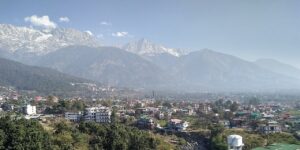
● Historical Background:
Dharamshala’s historical roots are deeply intertwined with the evolution of Tibetan Buddhism and the spiritual presence of His Holiness the 14th Dalai Lama. Following the Chinese invasion of Tibet in 1959, a significant number of Tibetan refugees, including the Dalai Lama, sought asylum in India. Dharamshala became the residence of the Dalai Lama and the center for the Tibetan Government-in-Exile. This elevated the city’s status and brought it to the international forefront.
● Geographical and Environmental Landscape:
Dharamshala is blessed with a breathtaking geographical landscape. It is divided into two parts: the upper Dharamshala and the lower Dharamshala. The upper region, known as McLeod Ganj, is perched at an elevation of approximately 2,082 meters and offers stunning views of the Dhauladhar mountain range. The lower region, on the other hand, is comparatively warmer and serves as the administrative hub.
The Dhauladhar range stands as a magnificent backdrop, attracting trekkers, mountaineers, and nature enthusiasts. The dense cedar and oak forests, vibrant rhododendrons, and pristine waterfalls make Dharamshala a paradise for ecotourism.
● Cultural Heritage and Diversity:
Dharamshala is a melting pot of diverse cultures, languages, and traditions. The Tibetan community has a strong presence, bringing with them their unique customs, festivals, and arts. The blend of Tibetan and Himachali culture is evident in the local food, clothing, and architecture. The city hosts numerous Tibetan festivals such as Losar, Saga Dawa, and the Kalachakra festival, attracting visitors from around the world.
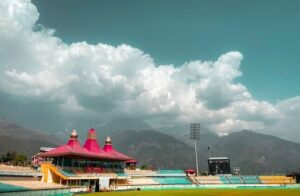
The Tsuglagkhang Complex, located in McLeod Ganj, is the spiritual heart of the Tibetan community. It comprises the Namgyal Monastery, the Tibet Museum, the residence of the Dalai Lama, and the Tsuglagkhang Temple, where pilgrims gather for prayers and meditation.
Climate of India: Rainfall, Temperature and Himalayan Region
● Tourist Attractions and Activities:
Dharamshala offers a plethora of attractions for tourists. The Bhagsu Waterfall, Dal Lake, St. John in the Wilderness Church, Kangra Art Museum, and War Memorial are just a few of the must-visit spots. Adventure enthusiasts can indulge in trekking, paragliding, and rock climbing, immersing themselves in the natural beauty and adrenaline-pumping activities the region offers.


